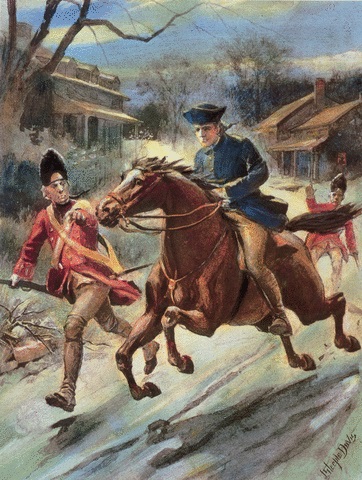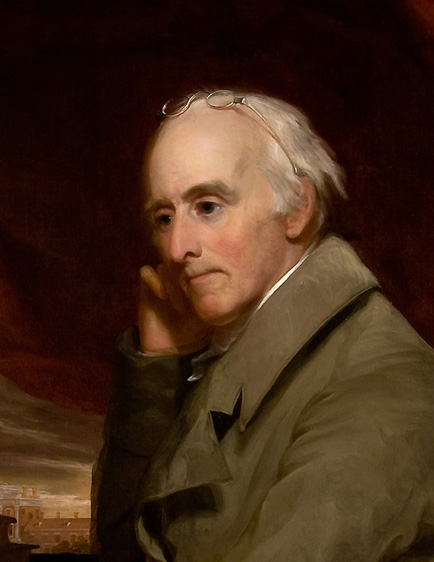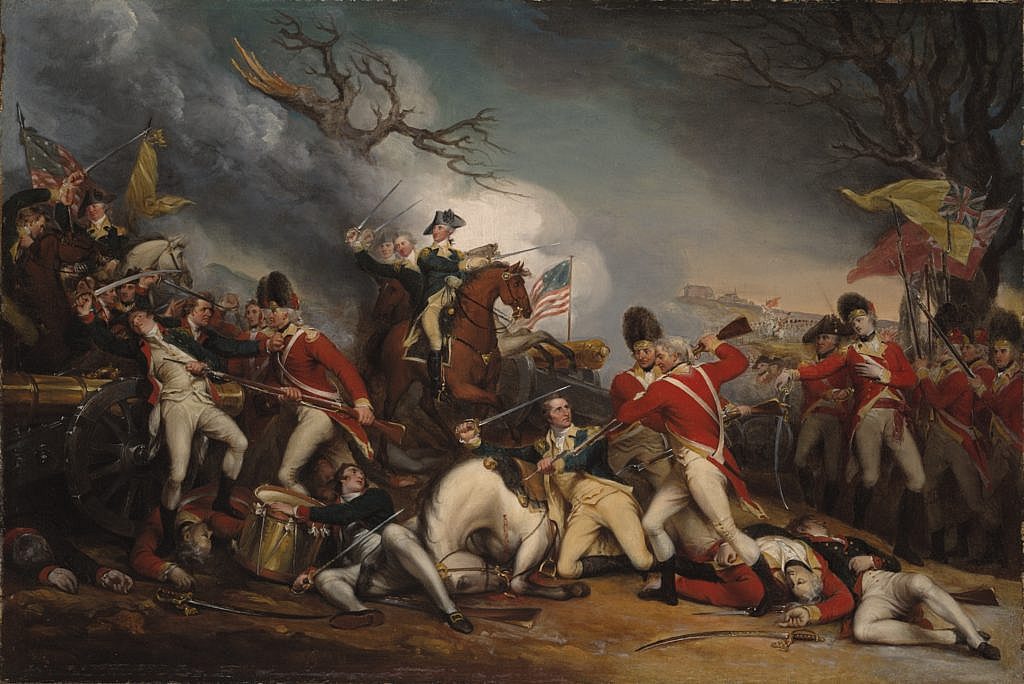With those of us in the US having just celebrated Independence Day on July 4th, I thought it would be in order to write about an unsung hero of the American Revolution. For most of us, we grew up hearing the names Washington, Jefferson and Adams, as they are the celebrated names of early US history. Each is an iconic figure in the unfolding drama of the American experiment in democracy. Their images adorn the walls of Washington DC’s government buildings and even our US currency.
 For students of history, we are faced with a significant challenge; separating fact from fiction. Many of the impressions we have of American history are just that…impressions! The real stories have become lost amongst the hyperbole of poems, children’s books and movie scripts. Few realize their impression of Paul Revere and his famous ride are not based on actual events, but the famous poem by Henry Wadsworth Longfellow a well-regarded romantic poet and Harvard professor. In 1860, when Longfellow began writing his poem, the United States was on the verge of a Civil War. In an effort to unify the country, he tried to use the heroic story of Revere’s ride to bring people together. While his heart was in the right place, he romanticized Revere’s ride. In a valiant effort to produce a stirring poem, he twisted a great many of the facts. The truth was lost in the patriotic fervour of the moment and his distorted view of events has stayed with us ever since as “the story”.
For students of history, we are faced with a significant challenge; separating fact from fiction. Many of the impressions we have of American history are just that…impressions! The real stories have become lost amongst the hyperbole of poems, children’s books and movie scripts. Few realize their impression of Paul Revere and his famous ride are not based on actual events, but the famous poem by Henry Wadsworth Longfellow a well-regarded romantic poet and Harvard professor. In 1860, when Longfellow began writing his poem, the United States was on the verge of a Civil War. In an effort to unify the country, he tried to use the heroic story of Revere’s ride to bring people together. While his heart was in the right place, he romanticized Revere’s ride. In a valiant effort to produce a stirring poem, he twisted a great many of the facts. The truth was lost in the patriotic fervour of the moment and his distorted view of events has stayed with us ever since as “the story”.
History also has some strange bedfellows. Case in point; would you believe that Philadelphia printer Ben Franklin and famed Evangelist George Whitfield were good friends. Yes, the hedonist and the holy man were buddies! The two first met in November of 1739 when Whitfield began his first preaching tour of the colonies. Later Franklin would become Whitfield’s main publisher of his sermons and writings. As one might imagine the two friends had very different temperaments; Whitfield was a man of the Psalms while Franklin loved Ecclesiastes. Whitefield preached with passion, evoking a great deal of emotion from his listeners. Franklin on the other hand was a skeptic approaching life with a detached reason. While Franklin never publically admitted to a conversion experience, ironically he belonged to many different churches of the day supporting them by paying his pew tax which people did then in lieu of tithing. While Franklin and Revere are household names Benjamin Rush is not.
YOU’RE KIDDING…IN OUR FAMILY?
 In what will be a surprise to many, at the time of his death on April 19th 1813, Dr Benjamin Rush was one of the three most notable figures in the fledgling United States. Bringing up his name today though draws blank expressions from most people as they have no idea as to who he was. There were no poems written about him and he doesn’t appear on any money. The fact I know anything about him is purely circumstantial as he is in my family tree. I first learned of Doctor Rush from my paternal grandmother Irene Brewer Scott when I was a child. He was the great uncle of her grandmother Nancy Haynes Brewer (1816-1917). I was too young to understand his relevance at the time but as I grew older learning more about him piqued my curiosity and I began to do research. I was quite surprised by what I learned. I had no idea as to how influential he was in the events which lead to the American Revolution.
In what will be a surprise to many, at the time of his death on April 19th 1813, Dr Benjamin Rush was one of the three most notable figures in the fledgling United States. Bringing up his name today though draws blank expressions from most people as they have no idea as to who he was. There were no poems written about him and he doesn’t appear on any money. The fact I know anything about him is purely circumstantial as he is in my family tree. I first learned of Doctor Rush from my paternal grandmother Irene Brewer Scott when I was a child. He was the great uncle of her grandmother Nancy Haynes Brewer (1816-1917). I was too young to understand his relevance at the time but as I grew older learning more about him piqued my curiosity and I began to do research. I was quite surprised by what I learned. I had no idea as to how influential he was in the events which lead to the American Revolution.
One of the rather tragic developments within the community of modern academic historians is the incomplete retelling of American history. On the one hand their quest for a more accurate reciting of history is a noble endeavour. On the other hand, their religious or dare I say non-religious prejudice has caused the pendulum to swing so far in one direction they have chosen to remove the deeply spiritual journey many of our Founding Fathers were on at the time of these globally shifting events. God was not a periphery figure in the minds of those driving American history. Quite the contrary, He was central to it! Dr Rush was one such figure who lived his life in light of eternity and saw the hand of God at work in the development of what was to become known as the United States of America, one nation under God.
ONE SMART COOKIE
 Benjamin Rush was born on January 4th 1745 on a plantation located 14 miles outside of the city of Philadelphia. He was the fourth of seven children born to John and Susanna Rush. John Rush died at the age of 39 when Benjamin was only six years old. He was later sent to live with his distinguished uncle Rev. Dr Samuel Finley in Maryland who was headmaster of a school there. Dr Finley would later go on to become the President of Princeton University. After five years at his uncle’s school, he exhibited such academic prowess he was encouraged to take the entrance exam at Princeton. He did so well they immediately placed him in the junior class. His brilliance was on full display there and he would graduate a little over a year later at the age of fourteen!
Benjamin Rush was born on January 4th 1745 on a plantation located 14 miles outside of the city of Philadelphia. He was the fourth of seven children born to John and Susanna Rush. John Rush died at the age of 39 when Benjamin was only six years old. He was later sent to live with his distinguished uncle Rev. Dr Samuel Finley in Maryland who was headmaster of a school there. Dr Finley would later go on to become the President of Princeton University. After five years at his uncle’s school, he exhibited such academic prowess he was encouraged to take the entrance exam at Princeton. He did so well they immediately placed him in the junior class. His brilliance was on full display there and he would graduate a little over a year later at the age of fourteen!
After graduating from college so young, Benjamin would find himself facing a dilemma. His heart wanted to serve God in the full time ministry and he had used his time at Princeton to prepare for it. The then President of Princeton, Rev Dr Samuel Davis, had another suggestion; study law. He felt his brilliant mind well suited for the discipline of a law degree. Benjamin’s uncle Dr Finley though, had an entirely different perspective; he encouraged him to study medicine. There were too many voices in his head and in the confusion his uncle suggested he spend a day alone praying and fasting to hear the voice of God. The result was he would spend the next five years (1761-1766) under the tutelage of Dr John Redman in Philadelphia studying medicine. To put events into historical context, it was just under 100 years earlier that humanity discovered the world of microorganisms and bacteria. It would be another 100 years before Louis Pasteur would make a significant impact by controlling the devastating impact these bacteria had on the human race.
At Dr Redman’s exhortation, Rush would continue his education in Scotland from 1766-1768 at the University of Edinburgh. While there he became fluent in French, Italian and Spanish. When he returned to the US he set up his medical practice back in Philadelphia and at the same time accepted a Professorship of Chemistry at the College of Philadelphia. For many people this would be a whole lifetime of activity and achievement, he was only twenty-four years old at this point! While getting his practice off the ground, he would become a member of an underground organization named the Sons of Liberty. There he would connect with other notable members; Sam Adams, John Hancock, Paul Revere and Patrick Henry. The organization’s mission was to protect the rights of the colonists and fighting taxation from the British government.
A GOOD PAINE IN THE ASS
 In 1772 an Englishman by the name of Thomas Paine would immigrate to the colonies. One fateful day Dr Rush would meet Mr Paine in a Philadelphia bookstore where they struck up a conversation. Later Dr Rush would read an article that Paine wrote decrying the slavery of Africans. The issue of slavery was an intense passion to Dr Rush and he sought out Paine for more dialogue. During their conversations they discovered they had a great deal more in common, especially concerning the future of the colonies. Recognizing Paine’s writing talent, it was at this point Dr Rush encouraged him to consider writing a document stating the case for the political freedom and independence of the colonies from Britain that the common man could understand. During 1775 Paine would put pen to paper and complete his work titled then as Plain Truth. Upon submitting it to Dr Rush, it was suggested the name be changed to Common Sense and with a bit of editing the pamphlet was sent to the printers. What happened next has been described as the match which lit the revolutionary fires. Enough of the population grasped their ideas to rally support for a move towards colonial independence and support for the Continental Congress. It is hard for us today to imagine the world back then but suffice it to say, their ideas which we take for granted today, were radical for the time. Every nation under the sun was then ruled by a monarchy.
In 1772 an Englishman by the name of Thomas Paine would immigrate to the colonies. One fateful day Dr Rush would meet Mr Paine in a Philadelphia bookstore where they struck up a conversation. Later Dr Rush would read an article that Paine wrote decrying the slavery of Africans. The issue of slavery was an intense passion to Dr Rush and he sought out Paine for more dialogue. During their conversations they discovered they had a great deal more in common, especially concerning the future of the colonies. Recognizing Paine’s writing talent, it was at this point Dr Rush encouraged him to consider writing a document stating the case for the political freedom and independence of the colonies from Britain that the common man could understand. During 1775 Paine would put pen to paper and complete his work titled then as Plain Truth. Upon submitting it to Dr Rush, it was suggested the name be changed to Common Sense and with a bit of editing the pamphlet was sent to the printers. What happened next has been described as the match which lit the revolutionary fires. Enough of the population grasped their ideas to rally support for a move towards colonial independence and support for the Continental Congress. It is hard for us today to imagine the world back then but suffice it to say, their ideas which we take for granted today, were radical for the time. Every nation under the sun was then ruled by a monarchy.
Dr Rush was soon elected to the Continental Congress representing Pennsylvania. While on Tuesday July 4th 1776 the Declaration of Independence was formally ratified, it would be gradually over the next month the various representatives would attach their names to the now revered document. Doing so had sobering consequences for each of them as they were now viewed by the British government as traitors to be hung onsite if captured. Dr Rush, with great conviction put his signature on the document and his friend Benjamin Franklin signed right after him. When a copy of the Declaration reached the city of New York on July 9th 1776 it caused a huge uproar. Hundreds of British naval ships were in the harbor at the time and yet it didn’t deter the crowds from tearing down a statue of King George and turning him into 42,000 musket balls.
THE RED CROSS BEFORE THERE WAS ONE
 Once the war started Dr Rush would accompany the Philadelphia militia into battle to care for the wounded. He would later accept the position of a Surgeon General for a segment of the Continental Army. In 1778 he would resign due to the incompetency and corruption of his counterparts. He was a man with impeccable character and high ethical standards based on the morality he had learned from his study of the bible. He believed the soldiers deserved the best of care and at one point had a run in with General Washington over his appointments of those responsible for the Army’s medical care. From what he learned on the battlefield he would go on to write Directions for Preserving the Health of Soldiers which was so influential it was still in use during the Civil War.
Once the war started Dr Rush would accompany the Philadelphia militia into battle to care for the wounded. He would later accept the position of a Surgeon General for a segment of the Continental Army. In 1778 he would resign due to the incompetency and corruption of his counterparts. He was a man with impeccable character and high ethical standards based on the morality he had learned from his study of the bible. He believed the soldiers deserved the best of care and at one point had a run in with General Washington over his appointments of those responsible for the Army’s medical care. From what he learned on the battlefield he would go on to write Directions for Preserving the Health of Soldiers which was so influential it was still in use during the Civil War.
After the war he returned to his political activities and in 1787 started a marketing campaign in the newspapers to encourage the adoption of the new US Constitution which was later ratified on March 4th 1789. He would then team up with James Wilson in 1790 to co-author the Pennsylvania State Constitution. In 1797 he accepted the appointment of Treasurer of the US Mint by President John Adams. He would continue in public service for nearly four decades also serving under Presidents Jefferson and Madison. Interestingly, the three Presidents he served under were from three different political parties. Dr Rush saw the big picture and didn’t allow himself to get sucked down into the morass of party politics. He once told a friend “I have been alternatively called an aristocrat and a democrat. I am neither, I am a Christocrat. I believe all power…will always fail of producing order and happiness in the hands of man. He alone who created and redeemed man is qualified to govern him.”
A GAME CHANGER
 With the war behind him, with what time Benjamin Rush had left between his responsibilities of government, he authored seven full length books; five of which dealt with medical subjects. He was such a prolific writer on medical topics he is known as the “Father of American Medicine”. In 1790, Philadelphia was a city with a population of just under 30,000. There were about 80 doctors to service the whole of the city. In 1793 there was an influx of refugees from the West Indies who brought with them the Yellow Fever. Soon the rapid spreading of the disease reached epidemic levels and most of those in the medical profession left the area. Of those who stayed, 10 died in the epidemic and at one-point Dr Rush wrote he was one of three who were available to treated the afflicted. Among his many virtues was an intense compassion for the oppressed and downtrodden. He stayed behind to try and save as many people as he could.
With the war behind him, with what time Benjamin Rush had left between his responsibilities of government, he authored seven full length books; five of which dealt with medical subjects. He was such a prolific writer on medical topics he is known as the “Father of American Medicine”. In 1790, Philadelphia was a city with a population of just under 30,000. There were about 80 doctors to service the whole of the city. In 1793 there was an influx of refugees from the West Indies who brought with them the Yellow Fever. Soon the rapid spreading of the disease reached epidemic levels and most of those in the medical profession left the area. Of those who stayed, 10 died in the epidemic and at one-point Dr Rush wrote he was one of three who were available to treated the afflicted. Among his many virtues was an intense compassion for the oppressed and downtrodden. He stayed behind to try and save as many people as he could.
Dr Rush’s compassion and morality also spilled over into his work as an avowed abolitionist. After returning to Philadelphia from Scotland years earlier, he became acquainted with a white Quaker by the name of Anthony Bezenet who was a staunch ally of the black community. Bezenet died in 1784 and three years later Benjamin Rush would have a deeply spiritual encounter. He had a dream one night of Anthony Bezenet walking down a beach to meet a group of Africans who had been relating stories about the horrors of slavery to Rush. He awoke from the dream so shaken he dedicated the rest of his life to eliminating this deplorable practice. He would go on organize the first Anti-Slavery Society in the new nation.
With so many significant and influential achievements, it’s hard to understand why so few people know so little about him. Well there’s more; Dr Rush is also known as the Father of Public Education. He believed strongly in free public education for all children and in 1791 wrote a lengthy piece providing a dozen or so reasons why America should continue teaching the Bible in our public schools.
“Let the children…be carefully instructed in the principles and obligations of the Christian religion. This is the most essential part of education. The great enemy of the salvation of man, in my opinion, never invented a more effectual means of extirpating Christianity from the world than by persuading mankind that it was improper to read the Bible at schools.” He would continue “The only foundation for a useful education in a republic is to be laid in religion. Without this there can be no virtue, and without virtue there can be no liberty.”
A PEACEMAKER & RECONCILER
 Two of Rush’s revolutionary friends and colleagues, John Adams and Thomas Jefferson would become estranged during the early years of building the country. The two men not only had very different personalities, they had two very different views of what the fledgling nation should look like. The tension and acrimony would get so heated they wouldn’t talk to each other for over two decades. On October 17th 1809 Dr. Rush had another spiritual dream in which he reconciled the two men. He then set out to write letters to both men telling them of his dream and the need for them to restore their friendship. Within three years both men did just that, much to Dr. Rush’s satisfaction. On April 19th 1813 Benjamin Rush would pass on into eternity. John Adams would write of him “As a man of science, letters, taste, sense, philosophy, patriotism, religion, morality, merit, usefulness, taken all together, Rush has not left his equal in America, nor that I know, in the world. In him is taken away, and in a manner most sudden and unexpected, a main prop of my life.”
Two of Rush’s revolutionary friends and colleagues, John Adams and Thomas Jefferson would become estranged during the early years of building the country. The two men not only had very different personalities, they had two very different views of what the fledgling nation should look like. The tension and acrimony would get so heated they wouldn’t talk to each other for over two decades. On October 17th 1809 Dr. Rush had another spiritual dream in which he reconciled the two men. He then set out to write letters to both men telling them of his dream and the need for them to restore their friendship. Within three years both men did just that, much to Dr. Rush’s satisfaction. On April 19th 1813 Benjamin Rush would pass on into eternity. John Adams would write of him “As a man of science, letters, taste, sense, philosophy, patriotism, religion, morality, merit, usefulness, taken all together, Rush has not left his equal in America, nor that I know, in the world. In him is taken away, and in a manner most sudden and unexpected, a main prop of my life.”
As far as Adams and Jefferson, they would carry on their mended relationship until July 4th 1826 when they would die within a few hours of each other. The fact they both died on that date makes one take pause and wonder about the divine significance of such a moment in human history. Oh how the world needs men and women of such character to guide humanity through the pitfalls that lie ahead as civilizations rise and fall. While we may not all be called to have the wide ranging impact of a Benjamin Rush, we are all called to be a light in the darkness on the hill God has placed us. Shine brightly you followers of the Jewish Rabbi who turned the world upside down with his radical message of grace and forgiveness.



Leave A Comment